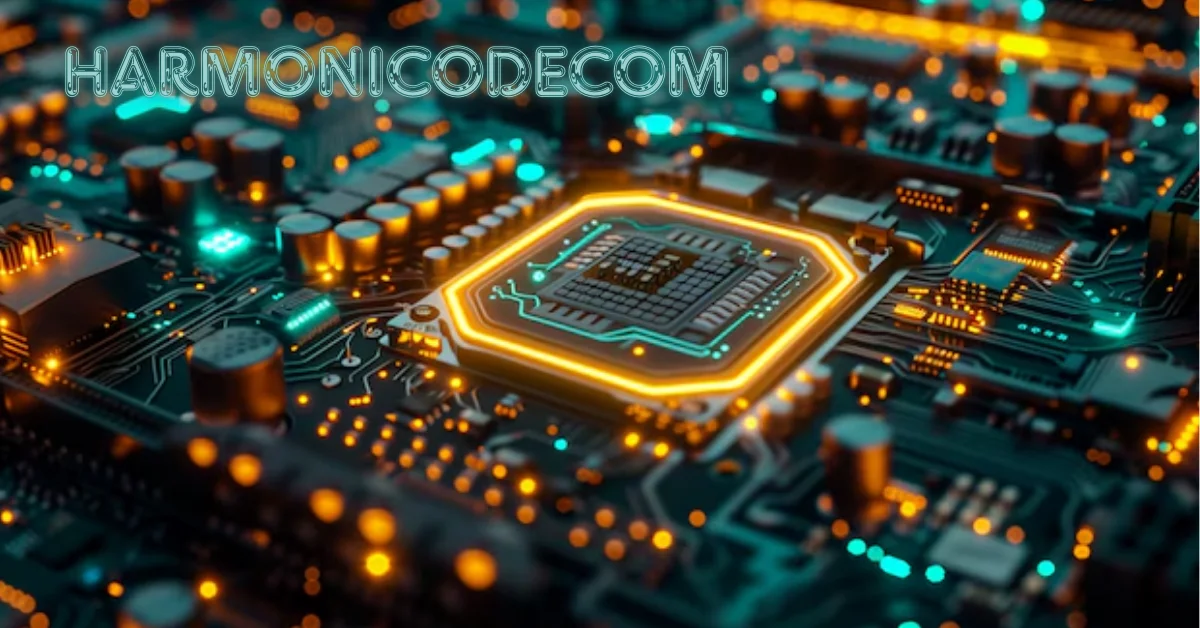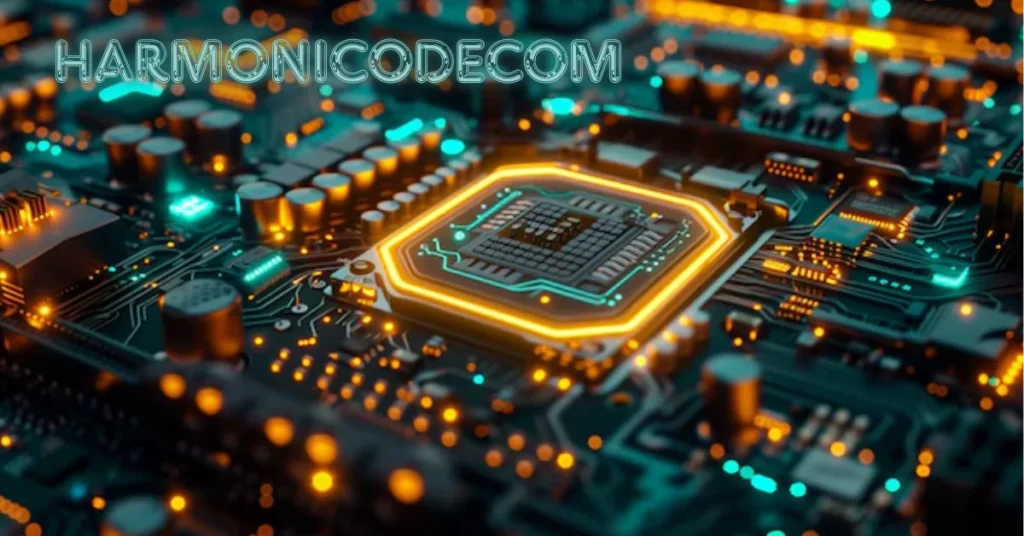Harmonicodecom refers to harmonic decomposition, a mathematical method used to break down complex waveforms into simpler components. This process plays a significant role in fields like signal processing, acoustics, and engineering, where accurate analysis of signals is vital. In today’s tech-driven world, understanding harmonic decomposition is essential for improving data accuracy, analyzing system performance, and enhancing signal clarity.
This article delves into the key concepts, benefits, and real-world applications of harmonicodecom. We will explore its significance, address common challenges, and discuss practical examples where it’s applied.

1. What Is Harmonicodecom?
Harmonicodecom, short for harmonic decomposition, is a process used to deconstruct complex signals into simpler sinusoidal components. These sinusoidal waves, known as harmonics, represent the fundamental frequencies of the signal.
This technique helps in identifying hidden patterns in signals, ensuring more precise data analysis. Whether in sound engineering or communication systems, harmonicodecom plays a central role in improving the understanding of signals.
2. How Harmonicodecom Works: A Technical Overview
At its core, harmonicodecom involves applying mathematical formulas to break down a signal into its base frequencies. This method relies on Fourier analysis, where a signal is represented as the sum of sine and cosine waves. The formula is defined as:
F(x) = a_0 + Σ(a_n cos(nx) + b_n sin(nx))
In this equation, a_n and b_n represent the amplitude of the harmonics, and n is the harmonic number. By isolating each harmonic, analysts can dissect even the most complex waveforms into manageable components for better analysis.
3. Primary Concepts in Harmonicodecom
3.1. Harmonics
Harmonics are the basic sine and cosine waves that, when added together, form the original signal. Each harmonic corresponds to a multiple of the fundamental frequency.
3.2. Fourier Transform
The Fourier Transform is a mathematical tool used in harmonicodecom to convert signals from the time domain to the frequency domain. This allows easier analysis and manipulation of the signal components.
3.3. Fundamental Frequency
The fundamental frequency is the lowest frequency of a periodic waveform and the first harmonic. It sets the baseline for all subsequent harmonics.
3.4. Phase and Amplitude
Phase and amplitude describe the characteristics of each harmonic. Amplitude refers to the height of the wave, while the phase determines the horizontal shift of the wave relative to the original signal.
4. The Importance of Harmonicodecom in Signal Processing
Harmonic decomposition is crucial in analyzing and processing various signals, whether electrical, acoustic, or digital. Its ability to isolate individual frequency components enhances the clarity and accuracy of data. Here’s why harmonicodecom is so vital:
4.1. Enhances Signal Clarity
By breaking signals down into simpler components, harmonicodecom improves the resolution and clarity of the data. This is particularly useful in communication systems, where clear signals are crucial.
4.2. Improves Data Accuracy
Harmonicodecom ensures a more detailed analysis of complex waveforms, leading to more precise data and better decision-making in fields like engineering and telecommunications.
4.3. Supports System Performance Analysis
In electronics and acoustics, harmonicodecom helps in evaluating system performance by analyzing frequency components. Identifying harmonic distortions allows engineers to optimize system designs and reduce interference.
5. Benefits of Harmonicodecom Across Industries
Harmonic decomposition is widely used across different sectors, each benefiting uniquely from this technique. Here are some key advantages:
5.1. Telecommunications
In telecommunications, harmonicodecom ensures the accuracy of transmitted signals. By identifying distortions, it aids in improving communication clarity and reducing errors.
5.2. Audio Engineering
Sound engineers use harmonicodecom to enhance sound quality. By isolating harmonic components, they can filter unwanted noise, improving overall audio performance.
5.3. Electrical Engineering
Harmonicodecom is essential in power systems to detect and mitigate harmonic distortions. These distortions can affect equipment performance and lead to inefficiencies in power distribution.
5.4. Medical Imaging
In medical fields, harmonicodecom is applied in imaging techniques such as MRI scans. It helps in breaking down complex images into simpler components for clearer and more accurate diagnostics.
6. Real-World Applications of Harmonicodecom
Harmonicodecom has practical applications across a variety of industries. Here are a few examples:
6.1. Power Systems
Power systems rely on harmonicodecom to monitor electrical signals for any harmonic distortions. This ensures the smooth operation of the system by reducing interference and power loss.
6.2. Music Production
Music producers use harmonicodecom to improve the quality of recorded sounds. By filtering specific harmonics, they can enhance the richness and clarity of the final audio product.
6.3. Data Compression
Harmonicodecom is also used in data compression algorithms, such as MP3 files. By representing complex signals with simpler harmonic data, it reduces file sizes without compromising quality.
6.4. Speech Recognition
Speech recognition systems benefit from harmonic decomposition by breaking down spoken words into frequency components. This allows for more accurate transcription and interpretation of speech patterns.
7. Challenges in Harmonicodecom
Despite its advantages, harmonicodecom faces several challenges. Understanding these issues is crucial for implementing effective solutions.
7.1. Harmonic Distortion
One of the main challenges is harmonic distortion, which occurs when the harmonics deviate from their ideal frequencies. This can lead to inaccuracies in the analysis and require corrective measures.
7.2. Complexity of Real-World Signals
In practice, signals are rarely ideal. Real-world signals contain noise and other irregularities that make harmonic decomposition difficult. Special techniques, such as windowing and filtering, are needed to manage these complexities.
7.3. High Computational Costs
Performing harmonicodecom on large datasets can be computationally intensive. This is especially true for real-time systems where quick processing is essential. Efficient algorithms and hardware optimization are necessary to handle such demands.
8. Solutions to Common Challenges in Harmonicodecom
There are several strategies for overcoming the challenges in harmonic decomposition:
8.1. Use of Filtering Techniques
To minimize harmonic distortion, filtering techniques like low-pass filters are employed. These filters remove unwanted frequencies, ensuring that only the desired harmonics remain.
8.2. Improved Algorithms for Signal Analysis
Advanced algorithms, such as the Fast Fourier Transform (FFT), reduce the computational load of harmonicodecom. This allows for quicker analysis, even in real-time systems.
8.3. Noise Reduction Methods
Noise reduction techniques help in managing the complexity of real-world signals. By eliminating background noise, harmonicodecom produces more accurate and reliable results.
9. Future Trends in Harmonicodecom
Harmonic decomposition is expected to evolve with advancements in technology. Machine learning and artificial intelligence are likely to play a significant role in automating signal analysis. These innovations will reduce computational costs, improve accuracy, and broaden the applications of harmonicodecom across industries.
9.1. Integration with AI and Machine Learning
Machine learning models can enhance harmonicodecom by learning from data patterns, enabling faster and more accurate signal processing.
9.2. Real-Time Processing Enhancements
As technology advances, we can expect improved real-time signal processing capabilities. This will allow harmonicodecom to be used in more time-sensitive applications like autonomous vehicles and advanced robotics.
10. Conclusion
Harmonicodecom is a powerful tool for breaking down complex signals into their fundamental components. Its application across industries, from telecommunications to audio engineering, highlights its versatility and importance. While there are challenges, such as harmonic distortion and high computational demands, solutions like advanced filtering and noise reduction techniques are making harmonicodecom more accessible.
Whether it’s improving sound quality, ensuring the accuracy of transmitted signals, or enhancing data analysis, harmonicodecom continues to be a critical process in today’s digital age. As technology evolves, its applications will only expand, driving innovation across multiple fields.
FAQs
1. What is harmonicodecom used for?
Harmonicodecom is used to break down complex signals into simpler sinusoidal components. It is commonly applied in fields such as audio engineering, telecommunications, and electrical systems to improve signal clarity and performance.
2. How does harmonicodecom improve sound quality?
By isolating individual harmonic components, harmonicodecom allows sound engineers to filter out unwanted noise and enhance the richness of the audio, leading to better sound quality.
3. What is the difference between a harmonic and a fundamental frequency?
The fundamental frequency is the lowest frequency of a periodic waveform, while harmonics are multiples of this frequency. The fundamental sets the baseline, and harmonics add complexity to the overall signal.
4. How is harmonicodecom used in medical imaging?
In medical imaging, harmonicodecom is used in techniques like MRI scans to break down complex signals into simpler components, leading to clearer and more accurate diagnostics.
5. What are the main challenges of harmonicodecom?
Key challenges include harmonic distortion, the complexity of real-world signals, and high computational costs. However, solutions such as advanced algorithms and filtering techniques help mitigate these issues.



